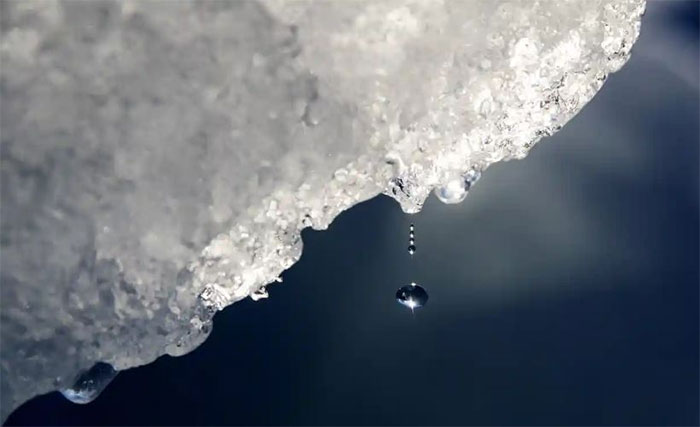Temperatures in Antarctica have soared by 40 degrees Celsius above normal, while at the same time, temperatures in the Arctic have increased by over 30 degrees Celsius.
Incredible heatwaves occurring at both poles of the Earth are raising alarms within the climate science community. They warn that this unprecedented phenomenon may indicate that climate change is occurring more rapidly and abruptly than previously thought.

Melting ice in southwestern Greenland. (Photo: AP).
The Guardian reported that temperatures in Antarctica set a record last weekend, exceeding normal levels by 40 degrees Celsius. Meanwhile, weather stations near the North Pole also observed signs of melting ice, with some areas experiencing temperatures up to 30 degrees Celsius higher than usual.
At this time of year, Antarctica typically cools rapidly after summer, while the Arctic gradually warms as daylight hours lengthen following winter. The simultaneous temperature increases at both poles are unprecedented.
Last year, in the first chapter of a comprehensive assessment on climate science, the Intergovernmental Panel on Climate Change raised alarms about unprecedented warming signals that have occurred—leading to changes such as ice melting in the Earth’s polar regions—that could quickly become irreversible.
Rated as a double danger, heatwaves at the poles are a clear signal of the damage humanity is inflicting on the climate. Additionally, the melting ice could trigger further changes that accelerate climate change.
As ice melts, especially in the Arctic, it exposes dark ocean areas that absorb more heat, further warming the planet. Meanwhile, the majority of ice in Antarctica covers land, so when it melts, it contributes to rising sea levels.
Michael Mann, Director of the Earth System Science Center at Pennsylvania State University, stated that extreme weather is exceeding predictions to an alarming degree. He said: “Models have done a good job predicting overall warming, but we argue that extreme events are exceeding model predictions. We need urgent action.”
These unprecedented weather patterns have recently emerged following a series of alarming heatwaves in 2021. During that time, temperatures approached 50 degrees Celsius in the Pacific Northwest region of the United States and Canada, resulting in hundreds of fatalities.
According to the AP, a weather station in Antarctica broke its historical record by recording a temperature of 15 degrees Celsius. Another coastal station, which was deeply frozen at this time last year, is now 7 degrees Celsius above freezing. Meanwhile, in the Arctic, some areas have reached temperatures up to 50 degrees Celsius.
Walt Meier, a scientist at the National Snow and Ice Data Center in the U.S., remarked: “The two poles are opposites. You rarely see both the North and South Poles melting at the same time. This is certainly an unusual event.”
Ice scientist Ted Scambos from the University of Colorado, who recently returned from a polar expedition, told the AP: “I’ve never seen anything like this in Antarctica.”

















































